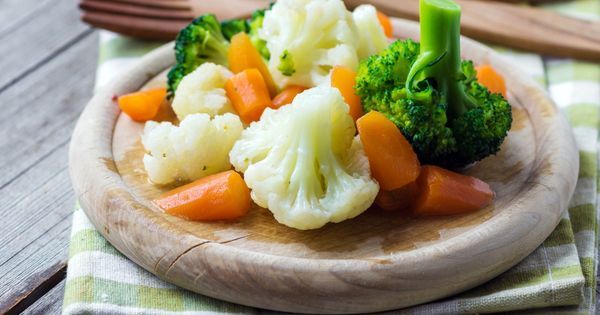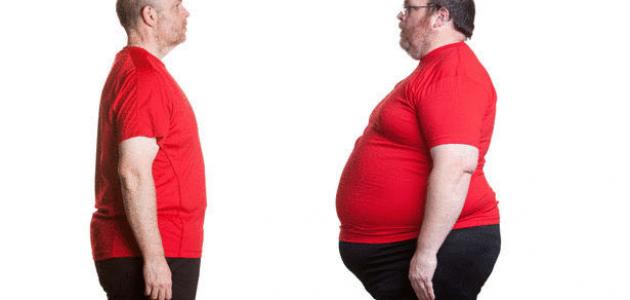Developed nearly a hundred years ago to treat epilepsy, the Keto diet is now offered in the management of overweight and type 2 diabetes. Rich in lipids and low in carbohydrates, it goes to against nutrition recommendations. While it has short-term benefits, its long-term health effects are not known. Disrupting eating habits, causing digestive problems, it can quickly become difficult to follow.
What is the Keto diet?
The Keto diet is a diet in which lipids (fats) provide most of the calories (70 to 80%, or even 90%) while carbohydrates (sugars) are provided in very small quantities (maximum 10% of calories) . When the body is deprived of carbohydrates in this way, fat becomes its main source of energy (whether it comes from meals or is taken from reserves) and part of it is transformed into ketone bodies, hence the term "Keto". Ketones can be used as fuel for different organs, but they are mainly directed to the brain.
The Keto diet was developed in the early 20th century by Dr. Russel Wilder of the Mayo Clinic (Minnesota, USA) to treat epilepsy. It represented an alternative to fasting - well known at the time to reduce epileptic seizures in both children and adults - by preventing weight loss and undernutrition.
It was widely used in this indication until 1938, when a new drug against epilepsy appeared.
Abandoned for several decades, it was prescribed again in the 1970s and especially the 1990s. Nowadays, it continues to be used, especially in pediatrics, in patients for whom anti-epileptic drugs are not very effective. or to reduce the doses of these drugs (which have side effects).
In recent years, this diet has been proposed by certain nutritionists for the management of overweight and has been the subject of scientific publications in this indication. It is also being studied for the treatment of type 2 diabetes, certain neurological diseases (Parkinson's disease for example) and certain cancers.
How does the Keto diet work?
In a balanced diet, fat provides 35-40% of calories, carbohydrates 40-55%, and protein 10-20%. It must also be followed very carefully (provide very little carbohydrate) to lead to the production of ketones and thus be effective. When prescribed for epilepsy, the presence of ketone bodies in the body is regularly checked through urine tests.
What can I eat?
Recommended foods
The recommended foods are foods that contain fat or protein.
- Meats, including the fatty ones: lamb chops, pork loin or ribs, beef rib steak, pieces of lamb, pork, beef or veal to simmer (stews, blanquettes, etc.)
- Poultry, with their skin: duck, turkey, hen, chicken.
- Cold cuts: hams, sausages, sausages.
- Fish, in particular fatty fish: herring, mackerel, sardines, salmon.
- Eggs.
- Mature cheeses.
- Nuts: almonds, hazelnuts, walnuts, pistachio and other oleaginous fruits, avocado and olives.
- Seeds rich in lipids: chia, flax, squash, sesame, sunflower.
- Tofu and tempeh (high protein soy products).
- Fat, in generous proportions.
Butter, sour cream and coconut oil are recommended daily, since they are rich in "short or medium chain fatty acids", lipids that promote the process of ketosis.
Rapeseed and walnut oils are recommended for their essential omega 3.
It is advisable to drink at least 1.5 to 2 liters per day, in order to compensate for the low water intake of food (in general, foods high in fat contain little water).
Prohibited foods
Prohibited foods are the main sources of carbohydrates.
- Breads, rusks and breakfast cereals.
- Starchy foods: pasta, rice, potatoes, semolina, corn, quinoa, sweet potato, pulses.
- Savory dough preparations: quiches, pizzas, puff pastry.
- Breaded fish or meat.
- Store-bought ready-made meals, soups and sauces.
- Sweet products: cookies, pastries, pastries, chocolate bars, candies, jams, honey, table sugar.
- Sweetened drinks: sodas, fruit drinks, iced teas, etc., as well as fruit juices.
It is possible to use a synthetic sweetener (aspartame, sucralose, stevia, etc.) to "sweeten" coffee or tea or make desserts in which the flour is replaced by ground hazelnuts or almonds.
Foods to moderate
Foods to moderate are foods containing low proportion of carbohydrates:
- Dark chocolate with more than 85% cocoa.
- Milk and plain dairy products: yoghurts, fermented milk and fresh cheeses: maximum one per day (they provide lactose, which is a sugar).
- Vegetables: maximum 150 g per meal.
- The fruits least rich in sugar: lemon, red fruits, papaya, watermelon: maximum 50 g (the equivalent of barely half a tray of raspberries) per day. Other fruits are not allowed.
Is the Keto diet easy to follow?
Cost of the Keto diet
The Keto diet excludes cheap foods like grains or processed foods and favors more expensive foods like meats, fish, or nuts. Its monitoring can lead to an increase in the budget.
To limit expenses, we can bet on:
- Eggs.
- Beef, veal, lamb, so-called third category meats, reserved for long cooking (braising or boiling).
- Frozen or canned fish of the mackerel or sardine type.
- Nuts sold in bulk.
Effectiveness of Keto diet tracking
Effectiveness against epilepsy
The interest of the Keto diet in the management of epilepsy is well demonstrated. About half of the children who are prescribed it see their seizure frequency decrease, up to 50%. In addition, Keto diet is associated with improved behavior, attention, memory, and academic progress, which may be related to the decrease in anti-epileptic drugs. The Keto diet is less used in this indication in adults. The recent review of 17 small studies (conducted in 3 to 87 patients) confirms that it reduces seizures in responder patients (by at least 50% and up to 90%) and suggests that it improves mood and quality of life.
Effectiveness for weight loss
As long as you control energy intake, the Keto diet can help you lose weight. The synthesis of 13 studies, bringing together a little over 1,400 patients, concludes that the Keto diet is more effective, compared with a classic weight loss diet in which lipids only provide 30% of calories: after 1 year of follow-up, the weight loss achieved was nearly 1 kilo greater.
In a similar study published in 2016, after 2 years of follow-up, people on the Keto diet lost 12.5 kilograms and 11.6 cm in waist circumference, while people on the conventional diet had lost only 4 kilos and 4.1 cm waist circumference.
As with all weight loss diets, the question of medium or long term stabilization of the weight obtained arises. In a study of 377 overweight or obese people followed for 1 year, the Keto diet helped lose an average of 12 kilos for the first 12 weeks, then stabilize the weight over the following 40 weeks. But, for lack of enough studies and hindsight, researchers cannot say that the Keto diet can shed extra pounds permanently. In addition, they lack data regarding its safety beyond 1 year.
According to a team of Italian researchers, the Keto diet is useful in reducing appetite and promoting the burning of fat stores, but it should only be used for short periods (e.g. for 20 days), alternating with a diet. Mediterranean-type normo-caloric to consolidate the weight loss obtained. They also stress the importance, to prevent weight gain, of reintroducing carbohydrates only gradually after a Keto diet.
Interest in the management of type 2 diabetes
The interest of the Keto diet in the management of type 2 diabetes is debated among researchers. This type of diabetes is linked to insulin resistance, which results in low efficiency of the insulin produced by the body and therefore blood sugar that remains too high, especially in the hours following meals. In the majority of cases, insulin resistance is due to overweight localized in the abdomen. For a majority of people with type 2 diabetes, treatment involves weight loss, which reduces insulin resistance and thus improves blood sugar control.
The Keto diet, whose effectiveness in losing weight has been demonstrated at least in the short term, could be a good diet strategy: as it provides few carbohydrates (less than 50 g per day), it is not at risk of increase blood sugar levels despite insulin resistance. A study in Spain on a group of 90 overweight type 2 diabetics, men and women aged 30 to 65, compared it to a classic low-calorie diet. After 4 months, the Keto diet group lost an average of almost 15 pounds, compared to just 5 pounds in the conventional diet group. Glycated hemoglobin (HBA1c), a control of the blood sugar level during the 3 months preceding its dosage, fell further in the Keto group, from 6.9% to 6%.
Overall, there is no consensus on the value of the Keto diet in the management of type 2 diabetes. In the current state of knowledge, it is contraindicated for people suffering from heart, kidney or disease. hepatic (liver).
Interest in the treatment of Parkinson's disease
The Keto diet has recently been studied in the treatment of Parkinson's disease (as an adjunct to medication). In rodents, it prevents the degeneration of neurons which produce dopamine (the deficiency of which leads to the motor disorders observed in Parkinson's disease). And, while studies in humans are few and only involve small groups of patients, their results are encouraging.
The Keto diet appears to reduce disease progression, improve vocabulary access and memory, as well as non-motor symptoms, such as depression, fatigue, daytime sleepiness, or urinary disturbance.
Researchers, who have just published a synthesis of existing studies (including studies with patients suffering from Alzheimer's disease), confirm the interest of the Keto diet in the prevention of neurological diseases and the need to carry out studies of larger scale. They nevertheless point out that the patients concerned are generally elderly and warn against the risk of undernutrition that can be caused by the Keto diet (which suppresses appetite and encourages less eating).
Interest in the treatment of cancers
The Keto diet is also being studied in the treatment of cancers. These diseases are generally accompanied by insulin resistance, hindering the proper use of carbohydrates by the body and thus promoting weight loss and weakening. In addition, since cancer cells consume large amounts of carbohydrates, the Keto diet could somehow "starve" them and promote their apoptosis (cell death), a rationale difficult to prove in practice.
Other researchers have compiled the studies testing the Keto diet on humans in 2018: they are few in number, are interested in different cancers at different stages of the disease: their heterogeneity does not allow to conclude to a favorable effect of the Keto diet. However, the available data are encouraging and should encourage larger studies to properly assess the impact of the Keto diet on cancer prognosis, nutritional status and more generally the state of health of patients.
Limitations of the Keto diet
While proven effective in treating epilepsy and likely in managing obesity, the Keto diet is difficult to follow. It disrupts eating habits and excludes many foods from everyday life. In the majority of cases, it causes digestive disorders: nausea, vomiting, diarrhea (linked to its high intake of lipids) or constipation (linked to its low intake of fiber: no cereals, few fruits and vegetables). Many people are therefore led to abandon it quickly despite its positive effects.
What type of exercise should accompany the Keto diet?
Doctors who developed the Keto diet almost 100 years ago to treat epilepsy weren't particularly advocating accompanying it with exercise.
Nowadays, its follow-up in the context of weight loss could be supplemented by a program of physical activity aimed at moderating muscle wasting (which exists regardless of the weight loss diet). However, caution should be exercised given its very low carbohydrate intake (priority fuels for muscle): there is a risk of hypoglycemia (excessive drop in blood sugar levels), in particular in amateur athletes. It is therefore better to stick to gentle activities, such as walking, yoga or pilates.
In contrast, in trained athletes who exercise endurance (medium intensity and long duration), a few studies suggest that the Keto diet does not interfere with performance and that muscles are able to burn more fat than it was not imagined a few years ago.
Is this diet dangerous for health?
Cardiovascular risk
The impact of the Keto diet on cardiovascular risk factors has been the subject of several study reviews and is ultimately still poorly understood.
- Very high in fat, the Keto diet increases, at least in some, the blood levels of total cholesterol and LDL-cholesterol ("bad cholesterol"). This effect has forced patients with epilepsy to discontinue the regimen, even when it was found to be effective in reducing their seizures. Recent studies suggest the opposite, finding a decrease in LDL-cholesterol and triglycerides, as well as an increase in HDL-cholesterol ("good cholesterol"). These contradictory results could be explained by the differences in the lipid composition of the diets studied (some providing more saturated fatty acids, others more unsaturated fatty acids). In addition,
- The Keto diet helps to lose weight, which goes in the direction of reducing cardiovascular risk. However, existing studies do not make it possible to know whether the effect on weight is lasting.
- Even if the results are sometimes contradictory, studies lean towards an interest of the Keto diet to reduce insulin resistance, whether people who follow it are diabetic or not. This effect also goes in the direction of a reduction in cardiovascular risk.
- The impact of the Keto diet on blood pressure is poorly documented.
Overall, although its effects can vary from person to person, the Keto diet seems to reduce cardiovascular risk factors in the short term instead. However, it is not certain that its favorable effects persist beyond 6 months to 1 year. Compilation of 19 studies shows that after 2 years, the Keto diet is no more effective than a conventional diet in improving weight or cardiovascular risk factors, especially because of the difficulties patients have in dieting. long-term. Its long-term impact should therefore be the subject of longer-term studies. Researchers recommend ensuring the quality of the lipids provided by the diet: moderate saturated fatty acids and favor unsaturated fatty acids.
In the current state of knowledge, the diet is not recommended for people suffering from hypercholesterolemia or cardiovascular disease (angina pectoris, arteritis, history of myocardial infarction or cerebrovascular accident, etc.).
Blood sugar risk
In the short term, the Keto diet can cause hypoglycemia (related to reduced carbohydrate intake) with fatigue and headaches.
It is contraindicated in the case of type 1 diabetes. In the case of type 2 diabetes, it may possibly be monitored under medical supervision (provided that it has not developed cardiac, renal or hepatic complications of the diabetes). There is a risk of hypoglycaemia, especially when treatment includes a sulfonylurea.
Risks to the kidneys
The Keto diet tends to acidify the urine and thus increases the risk of developing uric acid-based kidney stones. This risk can be reduced thanks to good hydration and the consumption of sparkling water rich in bicarbonates with an alkalizing effect (Salvetat, Badoit, Perrier, etc.).
Due to its composition and especially if its protein intake is high, the Keto diet could have an adverse impact on kidney function. It is contraindicated in chronic kidney disease (renal failure) or high blood pressure (which promotes kidney disease).
Bone risk in children
Stunting has been described in some children with epilepsy following the long-term Keto diet. These bone abnormalities are linked to nutritional deficits caused by the diet. Their prevention requires a sufficient protein intake and the prescription of calcium and vitamin D1 supplements.
Is it compatible with special diets?
Vegetarian diet
The Keto diet is compatible with a broad vegetarian diet excluding only meats and allowing the consumption of eggs, fish and seafood.
Vegan diet (vegan)
The Keto diet, which excludes grains and pulses, is not compatible with a balanced vegan diet. Combining the two diets would amount to eating only oleaginous fruits, seeds, oils and vegetables and would cause multiple deficiencies, in particular in proteins, calcium, vitamins D and B12
Gluten free diet
The Keto diet excludes the main foods that may contain gluten: cereals and processed foods (dishes, soups, sauces, etc.). It is compatible with a gluten-free diet, as long as you check the composition of certain products, such as cold cuts or minced steaks, in which gluten can be used as a texture agent.
Low salt diet
The Keto diet excludes major sources of salt: store-bought breads and ready-made meals. It is compatible with a low-salt diet as long as you limit cold meats, cheeses, smoked or canned fish, canned vegetables, salted nuts and cooking salt.
Kosher diet
The Keto diet is compatible with a kosher diet, as long as you consume kosher meat and stick to permitted meats and fish.
Halal diet
The Keto diet is compatible with a halal diet, as long as you consume halal meat, stick to authorized meats and avoid commercial products containing the additives E 120, E 471 and E 472.
Are the contributions of this diet sufficient?
The consequences of such intakes on health in the medium or long term are not known. For some researchers, high fat weight loss diets increase cardiovascular risks.
Excluding grains and severely limiting fruits and vegetables, the Keto diet lacks fiber, which frequently results in constipation. In addition, fiber is one of the preventive nutrients for cardiovascular diseases and certain cancers and contributes to a good balance of the intestinal flora (many studies point to a link between unbalanced microbiota and increased risk of various diseases).
Due to the restriction in fruits and vegetables, the Keto diet also lacks vitamin C, beta-carotene and polyphenols (compounds with anti-oxidant or anti-inflammatory properties, which cannot be found in food supplements only very partially since there are more than 2000).
Overall, the Keto diet does not provide enough protective nutrients (useful in the prevention of the most common diseases, such as cardiovascular disease or cancer) to be followed for the long term. Its follow-up for a few months must be accompanied by food supplements prescribed by a doctor or advised by a nutrition professional.
What type of meals does this diet offer?
Example of a typical day providing 1500 kcal
Breakfast :
- Unsweetened coffee or tea (possibility of sweetener).
- 30 g (1 handful) of almonds, walnuts or hazelnuts.
- 50 g of red fruits: strawberries, raspberries, blackcurrants, currants
Lunch and dinner:
- 50 g of raw vegetables (the equivalent of a small grated carrot), vinaigrette with 1 tablespoon of walnut or rapeseed oil.
- 120 g of meat or fish or 2 eggs: cooking with 1 tablespoon of rapeseed or olive oil.
- 100 g of cooked vegetables (1 small plate), with 20 g (2 teaspoons) of butter or 60 g (2 tablespoons) of whole fresh cream.
To taste :
60 g (the equivalent of 1/4 of a Camembert) of cheese OR 30 g of cheese and 100 g (1 ramekin) of whole milk cottage cheese.
Benefits of the Keto diet
- The Keto diet requires limiting processed foods and home cooking (to avoid any trace of carbohydrates in store-bought foods), which is in line with current recommendations. At this level, it promotes the acquisition of good dietary practices.
- Thanks to the ketones, the Keto diet suppresses the appetite, which makes it easier to follow it for weight loss (in conventional weight loss diets, hunger increases with weight loss, which contributes to the "yoyo effect" ).
- The Keto diet offers the possibility of eating fatty meats or cheeses, which are generally considered to be of better taste quality, since the fat carries the aromas. Some studies show an attraction to fat in overweight people, a taste which would explain their difficulties in sustainably following low-fat weight loss diets.
- Likewise, fatty substances present in large quantities avoid dishes that are too dry - as is the case in many weight loss diets - and allow you to vary the preparations: gratins, sauces (without flour), fried foods, etc.
Disadvantages of the diet
- The beginnings of the diet can be painful: hypoglycemia, headaches, fatigue, related to the restriction in carbohydrates. nausea and bad breath, at least during the initiation of the process of ketosis.
- The diet excludes many foods, breads and starches, sweet products and some fruits. It can be monotonous, frustrating, and quite quickly difficult to follow. It can probably cause eating disorders in some people.
- The Keto diet has many contraindications: hypercholesterolemia, arterial hypertension, cardiovascular diseases, type 1 diabetes, chronic kidney disease, liver diseases such as fatty liver or "fatty liver" (because it is the liver that takes care of it. make ketones), stomach ulcer, irritable bowel.
















